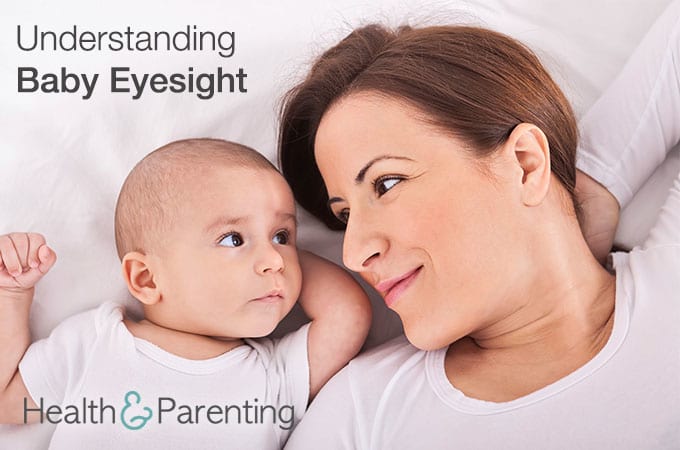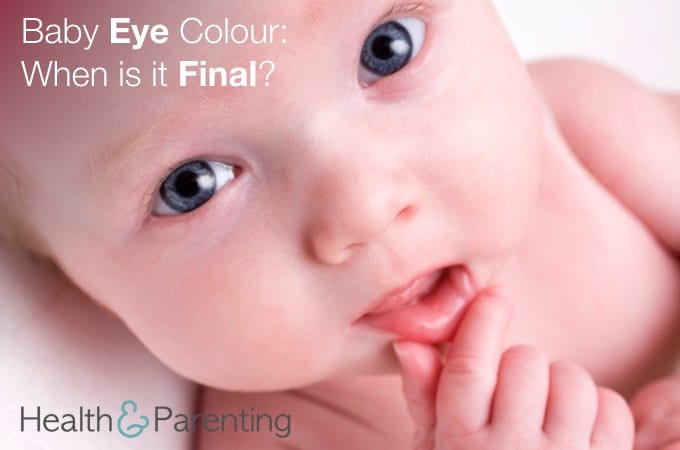When your little one was first born, you probably noticed that he or she seemed to focus only on objects right in front of their eyes. In fact, for many babies, their eyes remain completely shut for the first few days of life. But when those little eyes did open up, they probably stared intently at you much of the time. This is because at birth, baby eyesight isn’t very strong. Most babies can only see about 8 to 10 inches away—the perfect distance to where your face was as you held your little one.
Newborns also struggle to tell the difference between two objects by sight, and they have a hard time moving their eyes from one object to another. So once they’ve locked in on something, that’s where their focus remains.
Recently though, you’ve probably noticed that this is starting to change. In these early months, your baby’s vision has been improving every single day. By 2 months old, your little one’s stares were likely seeming more intentional. And around 3 months of age, babies can start to track moving objects, which means they can watch you as you walk across a room.
In the coming months, your baby’s eye-body coordination will start to improve along with baby eyesight—allowing him or her to start reaching for objects nearby. This may take some practice at first, because younger babies don’t yet have depth perception, so they can’t tell how far away objects are. But around 5 months of age, your baby will start to recognize the three-dimensional nature of his or her world, which will allow that depth perception to develop. Your baby should also be seeing a range of colors by 5 months old, though their color vision still isn’t as good as yours just yet.
The more mobile your little one becomes over the next year, the more their depth perception will continue to develop. At the same time, eye-hand and eye-body coordination will also be improving.
But that’s all still a few months away. Right now, just know that your baby is more likely to start recognizing you by sight, and that high contrast objects are going to continue capturing their attention.
If you notice any potential issues, such as excessive tearing, red or crusty eye lids, sensitivity to light, or their little eyes turning in different directions, make an appointment with your pediatrician to follow up. Your baby could have a simple infection, or there could be issues with eye muscle control that need to be addressed. Either way, your pediatrician should be able to respond to your concerns and make recommendations if visiting a specialist is advisable.
Written by Leah Campbell, infertility advocate, adoptive mama, writer and editor. Find me @sifinalaska on Twitter.
This information is not intended to replace the advice of a trained medical doctor. Health & Parenting Ltd disclaims any liability for the decisions you make based on this information, which is provided to you on a general informational basis only and not as a substitute for personalized medical advice. All contents copyright Health & Parenting Ltd 2016. All rights reserved.











